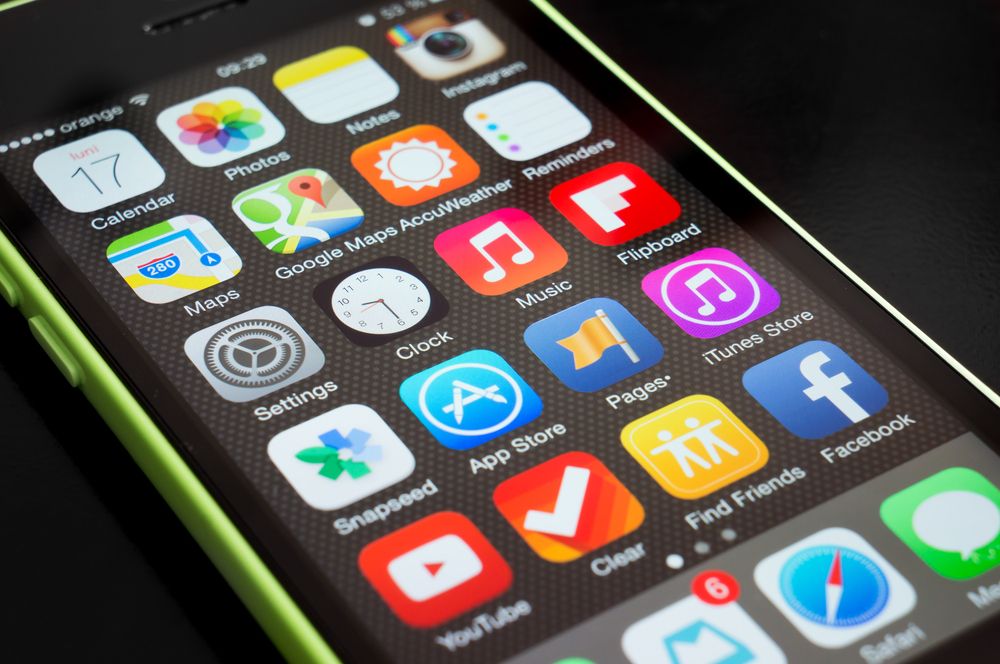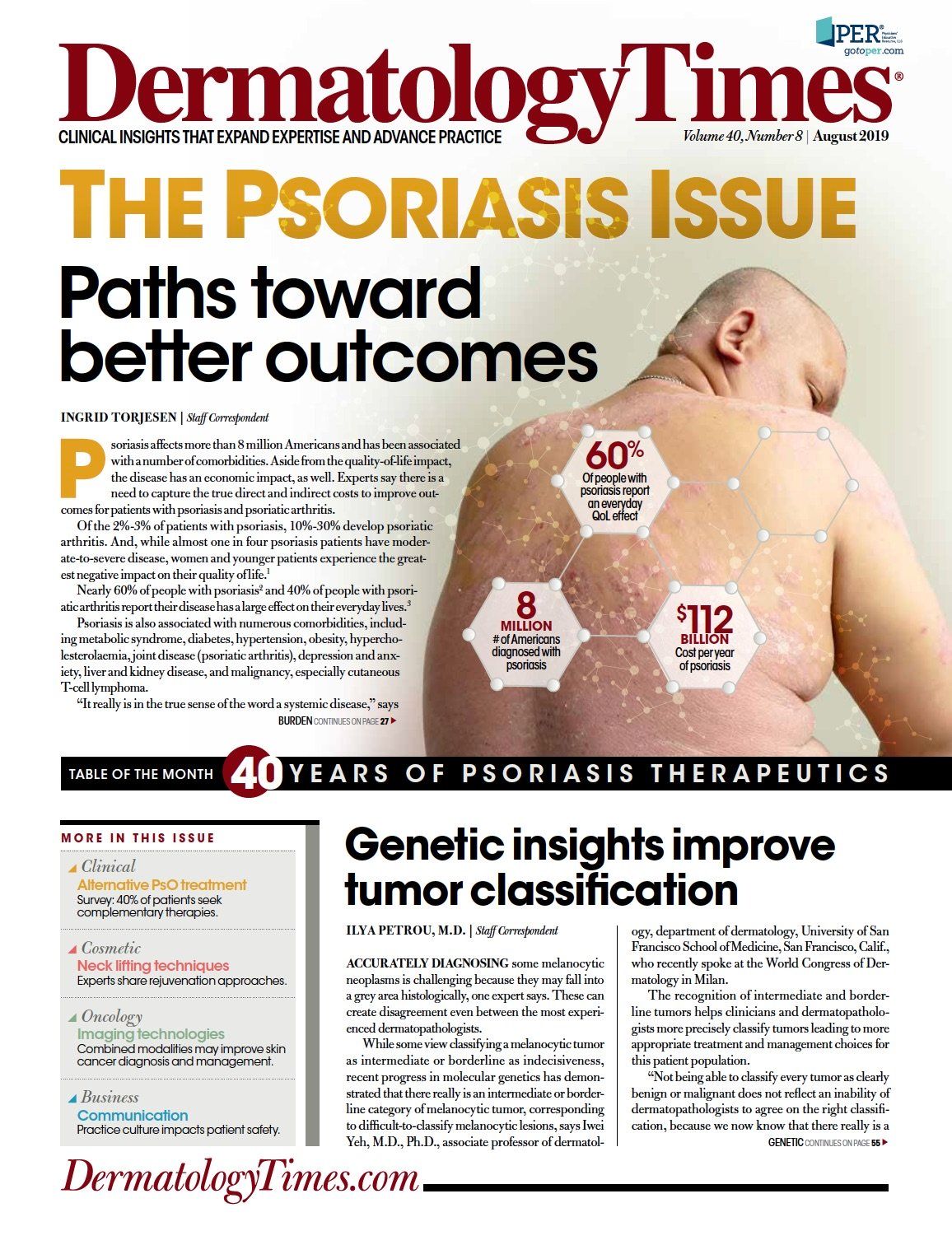- Acne
- Actinic Keratosis
- Aesthetics
- Alopecia
- Atopic Dermatitis
- Buy-and-Bill
- COVID-19
- Case-Based Roundtable
- Chronic Hand Eczema
- Drug Watch
- Eczema
- General Dermatology
- Hidradenitis Suppurativa
- Melasma
- NP and PA
- Pediatric Dermatology
- Pigmentary Disorders
- Practice Management
- Precision Medicine and Biologics
- Prurigo Nodularis
- Psoriasis
- Psoriatic Arthritis
- Rare Disease
- Rosacea
- Skin Cancer
- Vitiligo
- Wound Care
Publication
Article
Dermatology Times
10 must-have apps for dermatologists
Author(s):
Of the millions of apps available, it only takes a few to improve your practice and your life, says Daniel Mark Siegel, M.D. Find out what they are in this article.
You need just a few to improve patient care and your life, says this expert. (©DediGrigoroius/Shutterstock.com)

Daniel Siegel, M.D.

Android users can choose from more than 2 million apps, while Apple offers 1.8 million, according to recent data.1 You need just a few to improve patient care and your life, says Daniel Mark Siegel, M.D., clinical professor of dermatology at SUNY Downstate. He explained at the Atlantic Derm conference in Washington, D.C. in May.
Remember that the word “app” refers to a software application on a mobile device or website.
1. PRIOR AUTHORIZATION DRUG DENIAL TEMPLATE:
Look no further than the free American Academy of Dermatology (AAD) website, where a template works the magic, Dr. Siegel says. If you’re not a stellar letter-writer, the app does it for you, and concisely.2
“It’s easily accessed and takes the emotion out of the process - nicely and politely,” he says. “If you’re tired and burned out, this prevents you from taking that out on someone else.”
2. MOHS SURGERY APPROPRIATE USE CRITERIA (AUC) APP:
This free workhorse provides decision support on whether Mohs is the right decision for 270 scenarios. It was developed by the AAD, ASDS, ACMS and ASMS using UCLA-Rand criteria, and features 20 pages with 213 references.
The app came to the rescue when Mohs procedures were perceived as being potentially overused.
“It pulls the appropriate literature, including controlled trials, extracts the evidence, and parses it,” he says. “Then it allows you to choose the diagnosis and consider criteria. Consider this analogy: If you can catch a mouse with peanut butter and cheese and a mousetrap, why do you need a shotgun? It’s very efficient.”
3. VISUAL DX:
This app isn’t free, but it’s worth your investment at the AAD member price of $319. It allows you to build a differential to evaluate possibilities, compare variations and improve diagnostic accuracy. It’s a boon for dermatology.3
“A dermatology-focused support system can narrow down the differential diagnosis,” Dr. Siegel says. That may prevent you from ordering an unnecessary radiation study, an MRI or PET.
“You can look at the picture to determine what you think the patient might have, and the app also shows you diagnoses that could be life-threatening,” he says. The app does offer the world’s largest medical image library, peer-reviewed content, patient engagement tools and handouts, and educational webinars.
It’s best known for its Sympticon to visualize symptoms. View the app here.
4. DERMLITE X AND A CAUTION:
Smartphone cameras have made self-documentation of patient’s symptoms easier but are rife with HIPAA-compliancy risks for physicians, Dr. Siegel says.
“Secure your own phone and don’t use a four-digit password,” he adds. “Use facial recognition or finger printing for authentication so your passcode is not easily breakable. Loseor misplace your device with protected patient information on it, and you could be liable for thousands of dollars in fines.”
Here’s another tip: “If you set your phone to auto-wipe after a few failed login attempts, you protect your data,” he says. He’s heard from friends that young children at home will keep trying passwords to break in and play games. DermLite X is a free app that stores all images in a HIPAA-compliant manner.4
“It’s a couple of extra steps versus losing your livelihood,” he says.
Providers can learn more about securing health information at HealthIT.gov.
5. GOOGLE VOICE AND DOXIMITY:
Use Google Voice and a permanent number can be forwarded to one or more phones, along with a text and email of the call transcript.5 Use it on your main office number after hours, and for post-op care handouts. It’s free, more HIPAA-compliant than your own phone, and preserves your privacy, Dr. Siegel says. In any event, consult your own HIPAA compliance officer before using for your practice. Maybe you still wonder, “How can I call a patient without giving away my number?” Use the free-for-you Doximity dialer app and patients see your office phone number instead.6 It’s ideal since *67 comes up “unknown number” and patients may not answer.
6. CHARTBUILDER AND CPT QUICK REF:
Marketed as “the best ICD-10 conversion tool ever created,” ChartBuilder builds, saves and prints your own personalized ICD-10 charts - and cross-maps your ICD-9 codes for free.7 There’s training, too, Dr. Siegel says.
Don’t miss the AMA’s CPT QuickRef app, and it’s also free.8
7. SKINVISION:SkinVision uses a complex algorithm to map out features of a lesion to help determine melanoma risk for a patient who’s uploaded a photo of their mole or skin condition.9 It’s not yet available in the United States, but stay up to date at bit.ly/SkinVisioncomingsoon.
8. EVERNOTE:
Evernote is like your own private Google-like universe, a note-taking app that helps track most everything. You can save, sync and share - and it’s all secure.10 Start with the free option.
9. EPOCRATES AND GOODRX:
Epocrates from Medscape is the number one medical reference app, with evidence-based guidelines.11 It’s free, but there’s a premium version for sale.
GoodRx allows you to look up any drug price and help your patient save; it’s the number one free medical app.12
10. PUBMED:
Download PubMed on Tap for $4.99 and search PubMed and PubMed Central.13 Â
References:
1. https://www.statista.com/statistics/276623/number-of-apps-available-in-leading-app-stores/
2. https://www.aad.org/drugtemplateletter/
3. https://www.visualdx.com/professionals/dermatology
4. https://dermlite.com/pages/apps-links
5. https://voice.google.com/u/0/about
6. https://play.google.com/store/apps/details?id=com.doximity.doxdialer&hl=en_US
7. http://www.icd10charts.com
8. http://info.commerce.ama-assn.org/cpt-quickref-app-access-tips
9. https://www.skinvision.com
10. https://evernote.com
11. https://www.epocrates.com
12. https://www.goodrx.com/mobile
13. https://apps.apple.com/us/app/pubmed-on-tap/id301316540
































